Introduction to and organic beans cultivation: The Beans belong to the Leguminosae family. They are considered nutritious vegetables as they have a high amount of vegetable proteins. The green tender pods are used as a vegetable and dry seeds. The Beans for drying are grown till the Bean seeds are large enough and pod begins to dry. The pods are shelled and then seeds are separated. Organic Beans are formed and processed without the use of synthetic fertilizers and pesticides.
All Bean varieties tolerate a wide range of weather conditions. As a result, they are dependable crops that yield an abundance of pods in backyard vegetable gardens. Bush Beans are generally compact and grow close to the ground. Pole Beans climb and need a trellis or other support. Bush Beans tend to produce more Beans in a shorter time, while pole beans will produce moreover an entire season.
A step by step guide to organic Beans cultivation practices
Organic gardens are gaining in popularity as people realize the several benefits to themselves, the environment and other living creatures. Organic cultivation means not using synthetic or chemical fertilizers, insecticides or pesticides. Organic cultivation stick to fertilizers made from animal or vegetable by-products and get creative when dealing with unwanted pests utilizing beneficial insects or plants that deter the unwelcome visitors.
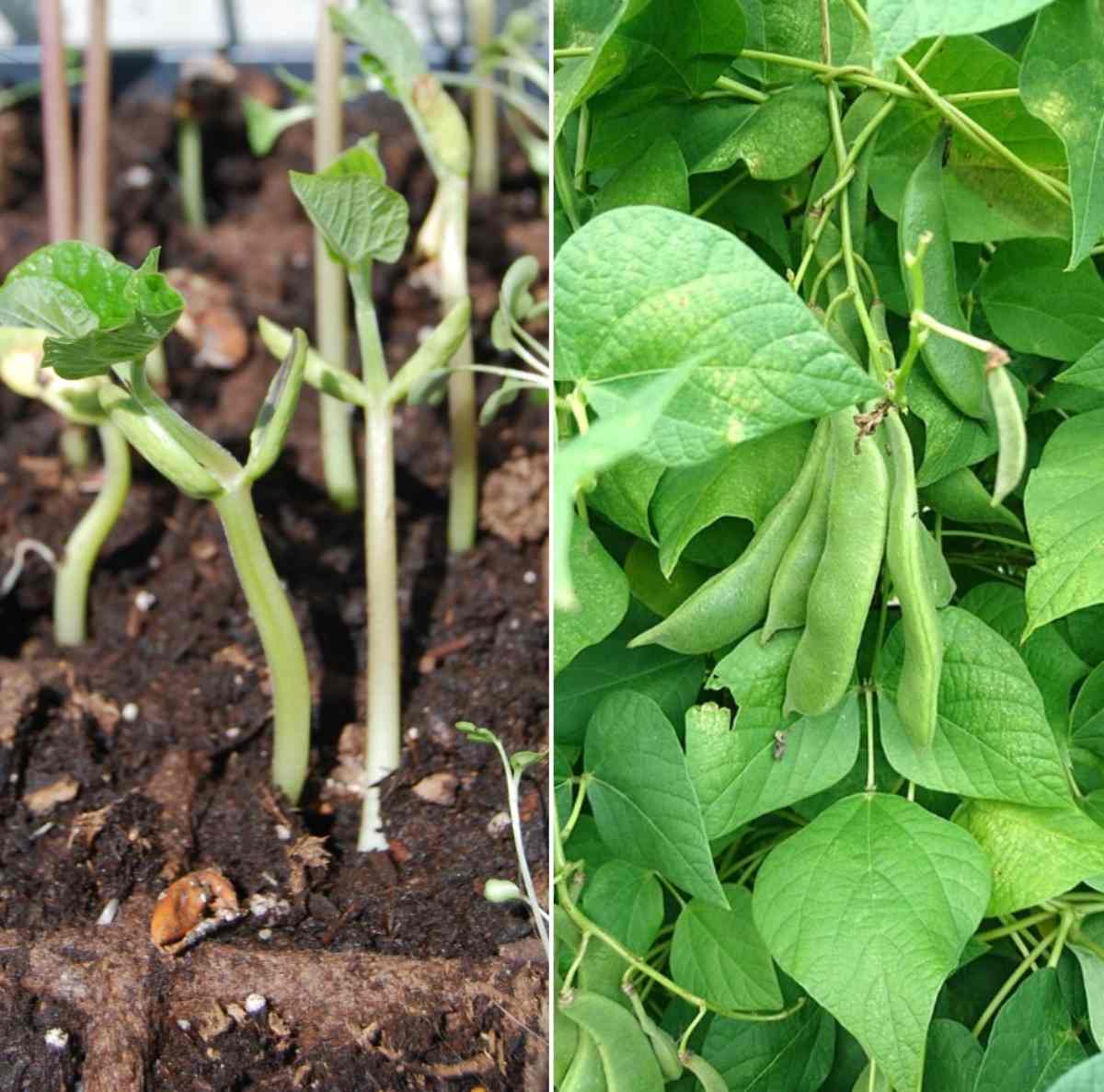
Not only does an organic garden cause less harm than conventional-type gardening, it actually has several benefits;
- Organically produced food helps defend against cancer with its higher essential vitamins and nutrients.
- By eating organically grown food, you ingest fewer chemicals.
- Organic gardens feed the soil rather than deplete it.
- Most organic gardeners use compost because reduces the amount of waste going to landfills.
Types of Beans or variety of Beans
The major types of organic Beans are dry beans, snap beans (also known as green beans), and soybeans. The mature seeds of dry beans serve as a protein source in a different variety of foods worldwide. Dry beans and snap beans are the same species, although dry beans are distinguished from snap beans or green beans which are consumed as immature pods. Dry and snap beans differ from soybeans, in which the seeds are consumed in a variety of processed forms such as tofu, soybean meal, and oil. Dry beans are mainly divided into classes with a range of seed sizes, colors, and shapes. Examples contain black beans, pintos, navy beans, small red beans, and kidney beans. Soybeans are generally divided into two groups, feed-grade, and food-grade, with the food-grade including soybeans for processing, “tofu-Beans”, and edamame, the latter of which is eaten as immature beans.
You may also like the Custard Apple Seed Germination.
Some of the Bean types to try are;
Snap Beans – Snap Beans are the most popular garden beans contain bush and pole varieties, which vary in shape, size, and color. Tender filet beans are a type of green snap bean with slender, delicate pods. They are grown just like other snap beans. The growth period will be 50-55 days bush, 50-67 days pole.
Dry soup Beans – Dry soup beans grow like snap beans, but the immature pods stay tender for only a few days as the plants hurry to produce mature seeds. They are easy to dry. The growth period will be 55 days green, 85 days dry.
Scarlet runner Beans – These Beans produce showy clusters of red blossoms that attract hummingbirds and bumblebees. You can eat the young pods such as snap beans, or let the pods dry and harvest the mature Beans. The growth period will be 60 days green, 90 days dry.
Lima Beans – Lima Beans stand up to humid heat and heavy insect pressure, which makes them a fine Bean for warm climates. The growth period will be 75 days bush, 85 days pole.
Yard-long Beans, or Asparagus Beans – Yard-long Beans are grown for their long, slender pods, which are harvested at 12 to 18 inches long. Pods can be green, burgundy, or streaked. The growth period will be 80 days.
Tepary Beans – Tepary Beans are a type of dry bean, was developed by the native people of the Southwest, so they’re well-adapted to desert conditions. They come in different colors.
Soil requirement for organic Beans cultivation
Well-drained loamy soil with a pH level of 5.5-6.0 is required. It prefers cool climate and beans are very easy to grow. While they are at their best in moderately rich soil, they do well in a wide range of soils, even without fertilizer. In acidic soil (below a pH of 6.0) the addition of wood ashes, dolomite lime or compost will, by their alkaline nature, moderate the acidity. In a very sandy soil that leeches nutrients easily, nitrogen must be added, but bear in mind that too much will promote excessive leaf growth, plus delay and reduce pod production.
Planting time of Beans
Bean seeds germinate best when soil temperatures range between 60 and 70F. In spring, sow Bean seeds in fertile, well-worked soil starting on or after your last frost date. When growing fast-maturing bush snap Beans, make additional plantings at 3-week intervals until midsummer.
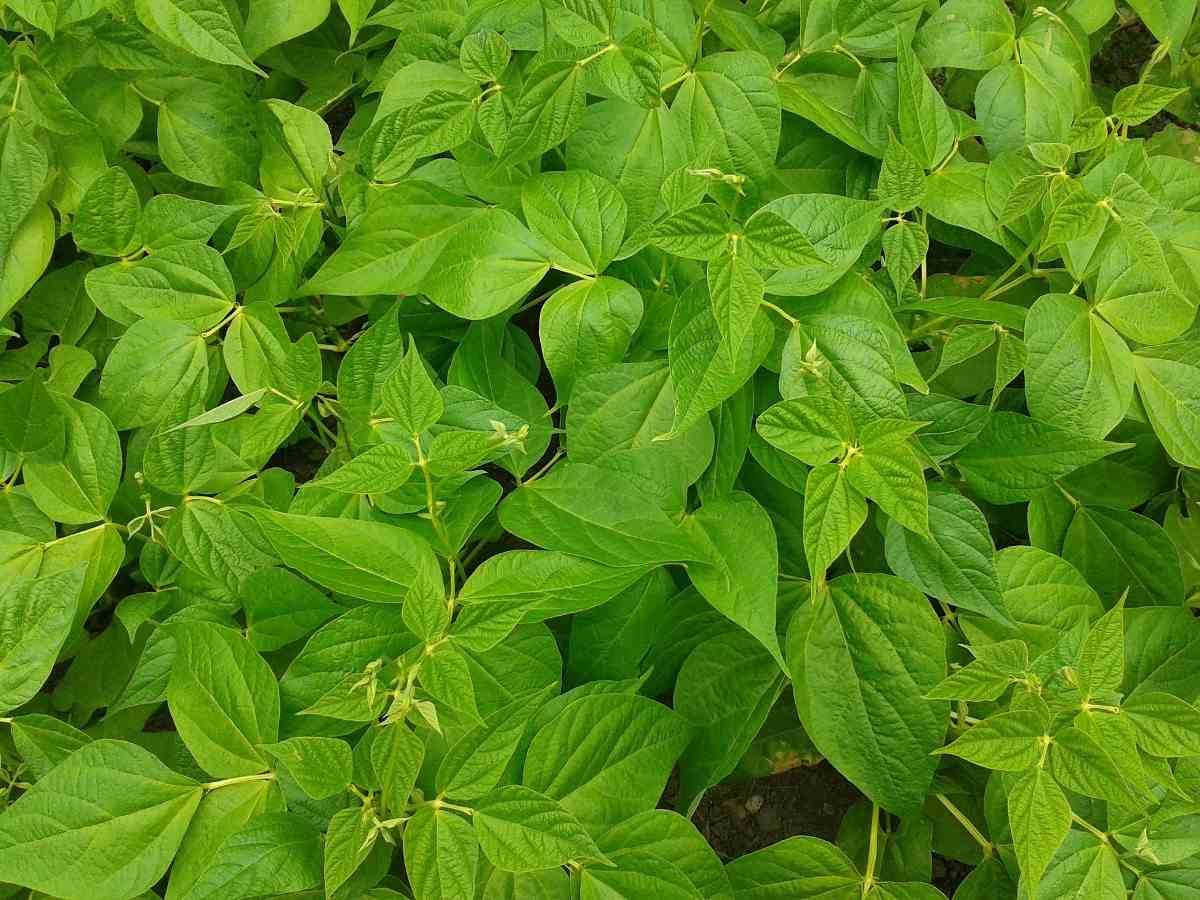
Beans are a warm-weather crop and there is little to be gained by having them shiver through their early plant growth. On a small scale growing, planting Beans in raised beds saves a lot of space and work. Raised beds heat up more quickly in spring to allow earlier sowing. Soaking Beans beforehand is not typically worth it when they are going into cold soil anyway. Because of presoaking in cracked seed and more difficult sowing, it only for late-season starts.
Space between Bean plants
Most people leave far too much space for their Beans to grow when they only require anywhere from 4 to 7 inches of space between them. Make sure to thin the rows by pruning smaller sprouts away then the strongest plant is left. This prevents crowding and Beans should also be planted 1 inch deep.
Planting method of organic Beans
Two weeks before planting, work compost or fertilizer into a spot that receives full sun. Then, plant Bean seeds directly into rich, fast-draining soil in spring after the soil has warmed. For bush Beans, form one inch-deep furrow and place Beans every few inches. For pole Beans, position the trellis or Bean teepee before planting the Bean seeds. Plant several Bean seeds in each 1-inch furrow. Cover all Bean seeds with soil and water well.
Then, prepare the planting bed by using a garden fork to loosen the soil. Mix in a 1-inch layer of mature compost. Plant seeds about 1 inch deep and 2 to 4 inches apart. Thin bush Beans to about 4 inches apart; thin pole Beans to 6 inches apart. Wide double rows (two parallel rows of Beans planted 12 to 14 inches apart) are the space-efficient way to grow Beans.
In case if you miss this: Vermicomost Production Cost, Income, Project Report.
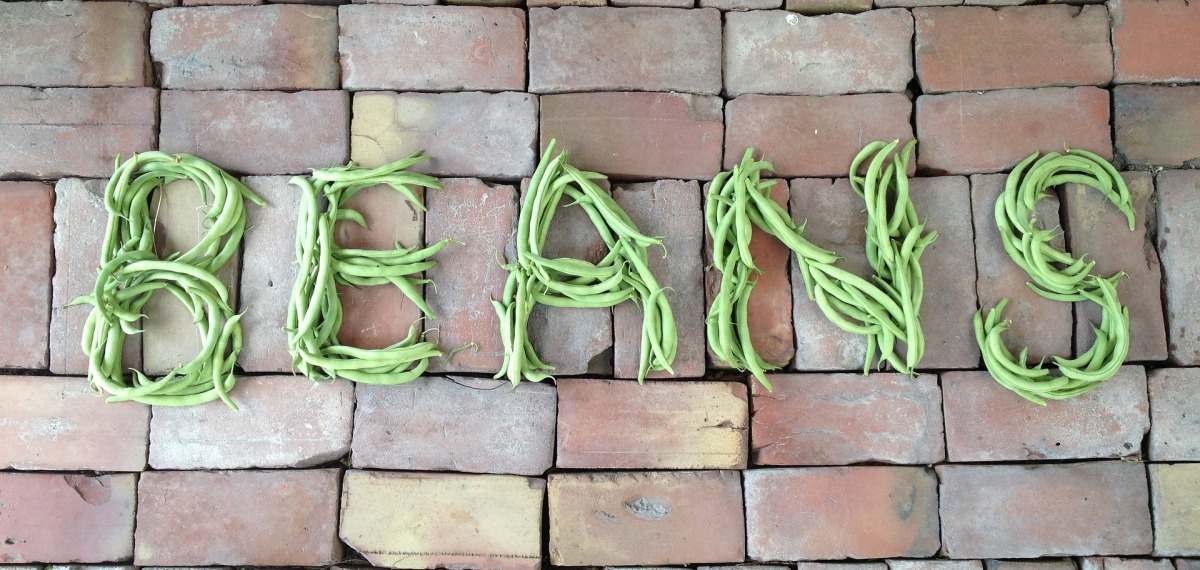
Keep the soil moist until the Bean seeds germinate. When seedlings sprout, carefully thin them to one plant every 6 to 8 inches. Then, apply a generous layer of mulch around the plants to conserve moisture and prevent weed growth. Bean plants need about 1inch of water per week. They must be watered in the morning so the foliage has time to dry before dark. Fertilize bean plants with an organic fertilizer every 2 weeks for the first 6 weeks, then once every 3 to 4 weeks. Keep an eye out for bean beetles, which are simply picked off by hand and terminated.
The plants need full sun and regular water. In general, bush beans mature faster and less sensitive to drought and extreme temperatures than pole beans. Provide support for vines in the form of a trellis or pole.
Fertilizing of organic Beans
Foregoing a chemical fertilizer for an organic one determines whether to harm the soil or make it healthier. Healthy soil is necessary for healthy plants, so use an organic plant fertilizer. Nutrient solutions, for example, compost teas, worm teas made from worm castings, as well as liquid organic fertilizers and bat guano provide good plant nutrition and overall plant health.
Better than synthetic fertilizers, these organic fertilizers won’t burn plants, and foster the growth of important soil microorganisms while they fertilize. Timing is everything when fertilizing because Bean plant nutrient needs change as the plant grows. Annual plants, benefit most when fertilized with a solution high in nitrogen when they are first planted (for growth and leaf development) and then switched to a low-nitrogen, high-phosphorous solution to encourage blooming.
Nutrient requirements for growing organic Beans
Beans have minimal fertilizer require compared to other warm-season vegetables, partially due to their ability to fix their own nitrogen. Use our own organic liquid fertilizer mix. If the leaves of the Bean plants begin yellowing at mid-season, the second application of nitrogen-rich fertilizer is beneficial. Organic matter aids the growth of the Bean plants. Compost, whether it is home composted materials or purchased compost, adds nutrients to the bed while aiding drainage. Beans do not tolerate soggy soils so composting the beds is particular in clay soils.
Irrigation requirement for organic Bean plants
Irrigation must be given immediately after sowing, third day, and thereafter once a week. A water deficiency resulting from a lack of soil moisture or excessive transpiration could lead to deformed or pithy snap Bean pods.
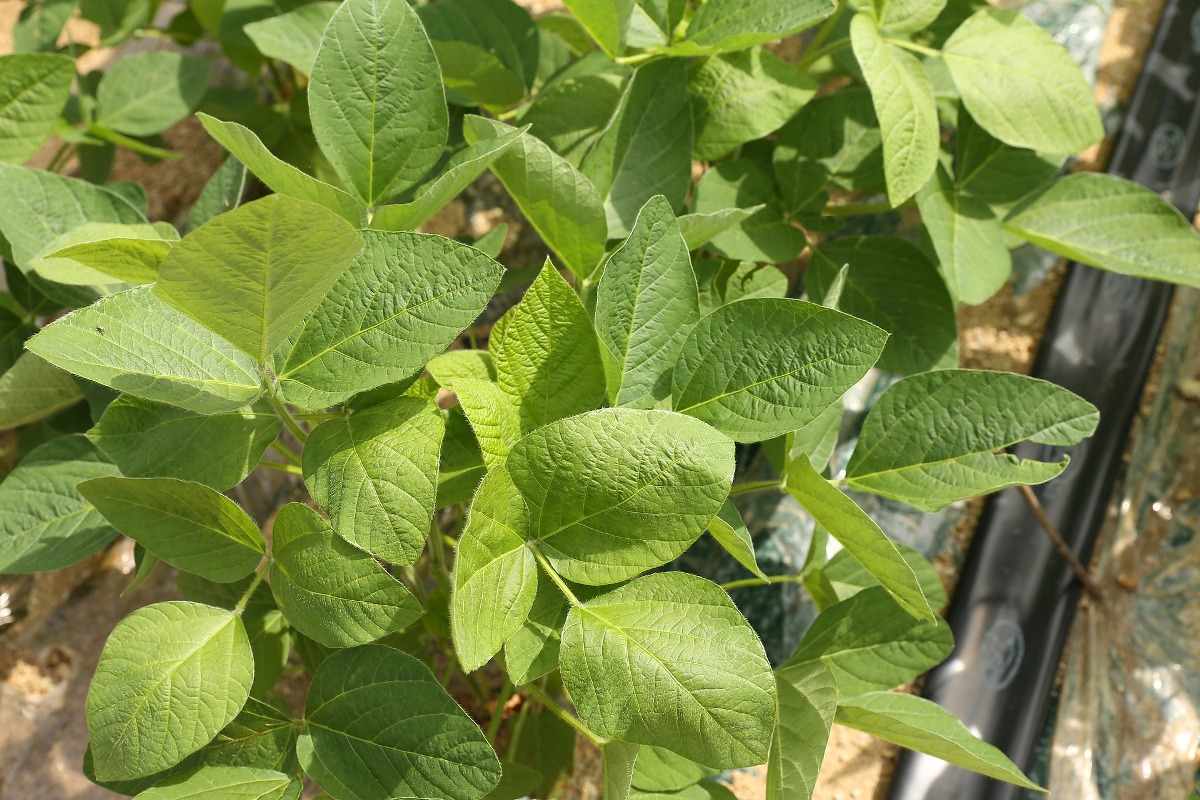
Companion plant for Beans in organic cultivation
All Beans enrich the soil with nitrogen fixed from the air, improving the conditions for whatever crop type you plant after the Beans are finished. In general, they are a mainly good companion for carrots, celery, chards, corn, eggplant, peas, potatoes, brassicas, beets, radish, strawberry, and cucumbers. Beans are great for heavy nitrogen users such as corn and grain plants because the nitrogen used up by the corn and grains are replaced at the end of the season when the Bean plants die back. Summer savory deters bean beetles and improves growth and also flavor. And keep Beans away from the alliums.
Cultural practices and weed management in organic Beans cultivation
Weeding should be done at 20 to 25 days and 40 – 45 days after sowing. The crop must be earthed up after each weeding. For creeping varieties, fix sticks with 5-6 feet height near each hill and allow the plants to climb.
You should not miss the Potato Seed Germination, Temperature, Time, Process.
Pests in the organic Bean crop
Some of the common pests of Beans are aphids, Japanese beetles, Mexican Bean beetles, etc. You can control these pests by hand as soon as you see them. You can also use organic homemade pesticides for controlling Bean pests (some mostly used organic materials for preparing organic pesticides are garlic, onions, chili, soap, neem oil, baking soda, and diatomaceous earth, etc.).
Major insect pests in organic Beans cultivation
Insects are another main contributor to yield loss in organic Beans. There are many examples of insects that affect organic Bean systems including;
Bean and potato leafhoppers– sucking insect that causes plant leaves to yellow at the tips and on the edges and can cause stunting
Western Bean cutworm– larvae of this insect feed on the pods of Beans reducing crop yield and quality
Soybean aphid – a sap-sucking insect that forms large colonies on soyBean. Soybean aphids can transmit viruses from plant to plant while feeding.
Seedcorn maggot – feed on dry Bean and snap Bean seed and seedlings. The risk of feeding is increased when temperature ranges are cool and the soil is wet.
Example of insect management – Bacillus thuringiensis (Bt) is a bacterium that ingested by susceptible insects is lethal. This product is referred to as a microbial insecticide of which there are four subspecies and over 100 commercial products obtainable for use in organic systems.
Insect pest management
Neem cake is applied by 250 kg/ ha after 4-5 weeks of sowing as a general insect management schedule. For the management of stem fly, which causes substantial losses, spray neem oil by 5ml/ lit at 10, 17, and 23 days after sowing. Pest management in organic Beans must be done without the use of synthetic herbicides, fungicides, insecticides, and other pesticides.
Major weed pests in organic Beans cultivation
Controlling weeds is the main cost of agricultural production systems, including organic Beans. Weeds can reduce the emergence, growth, and yield of organic Beans as they compete for light, water, and nutrient resources. Weeds are grouped in several ways, such as by life cycle. In the organic Bean crop, the most problematic weeds are with summer annual and perennial life cycles.
Summer annuals
Summer annuals are weeds that germinate in the spring or summer, produce Bean seed in the late summer to fall, and then die. And their life cycle is complete in one year.
Perennials
Perennial weeds can live for multiple growing seasons, generally due to hardy rootstocks.
Example of weed management – Several types of tractor-pulled implements such as a rotary hoe and one of the various types of cultivators or cultivators can be used to mechanically remove weeds from organic fields.
Disease management
For the control of foliar disease (rust and leaf spots) and fruit, rot apply Trichoderma harzianum by 10 g/ lit at an interval of 10 days.
Harvesting organic Beans
With short-season varieties, anyone blessed with a hot, sunny site can have a Bean crop that dries to perfection in the garden. The plant leaves fall off the plants and the pods turn brown. On hot late-summer days, the Bean pods start spilling their Beans. And pick them before too many have fallen. To ensure that the Bean pods are thoroughly dry, bring them indoors to a warm, dry place with good air circulation. Some varieties ripen over a week or two, and it’s best to go through the patch every few days to pick the driest.
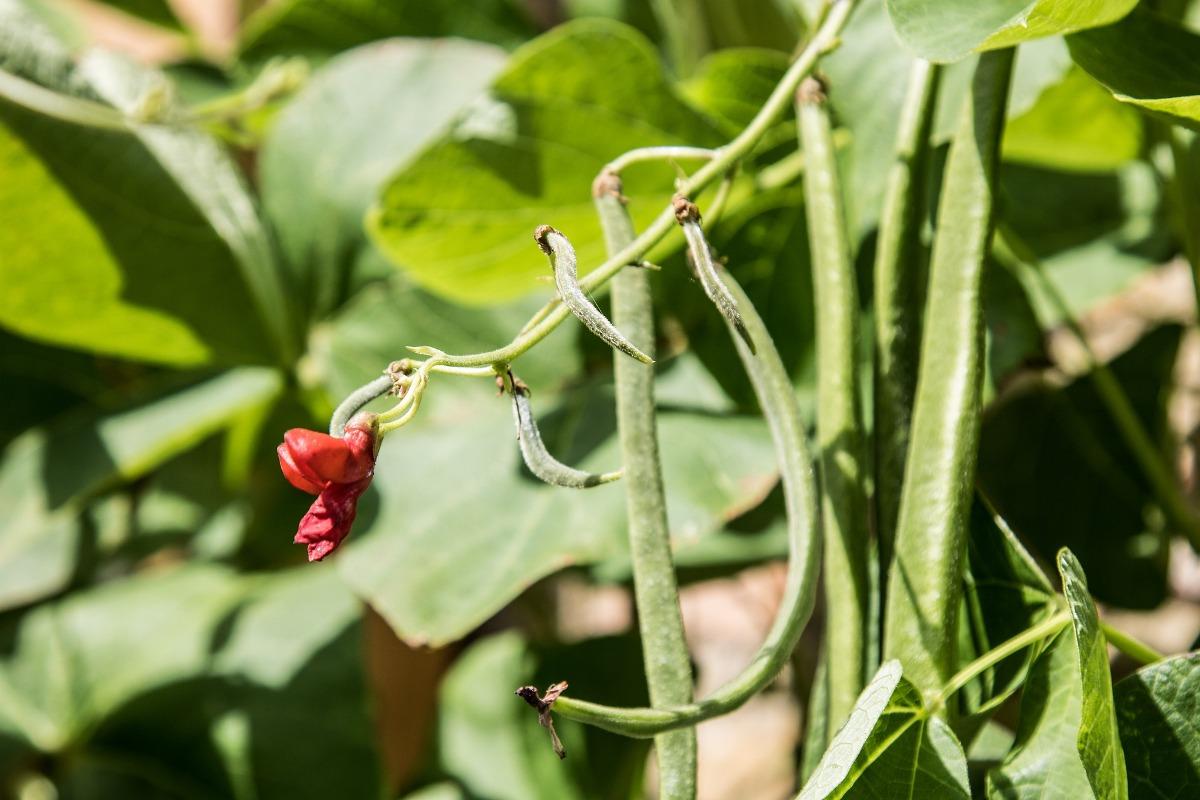
Watch plants carefully as Beans start to form and harvest every 2 to 3 days. Beans are ready to pick when the pods are well produced and rounded and snap readily if bent in half. If Beans are left on the plants too long, the Bean seeds overdevelop and the pods become tough. Poorly produced pods are caused by too dry soil, poor infertile soil, or insect damage. Lima Beans are picked when the pods are well filled and green in color. If the pods are yellowing, the Beans are too mature and left on the vine and picked later to use as dry Beans.
The yield of Beans in organic cultivation
About 12 to 15 tons/ ha of marketable Bean yields can be obtained by adopting good organic production technology.
Conclusion of organic Beans cultivation
Some or all of the above information may be applied for the cultivation of organic beans in polyhouse, organic beans farming in a greenhouse, growing organic beans at home in pots or containers, organic cluster beans farming, growing yard beans organically, farming of organic soya beans, growing organic lima beans, growing organic runner beans, and growing snap beans organically. You may also check the Organic Hydroponics Gardening.